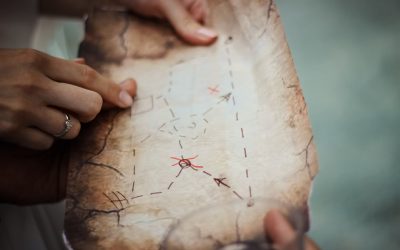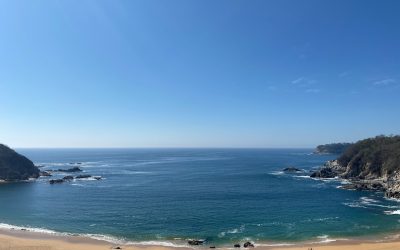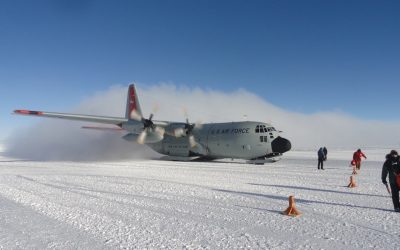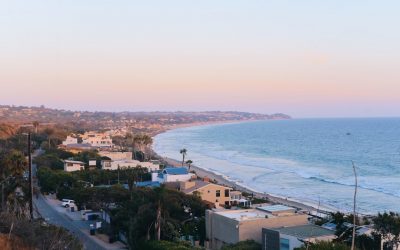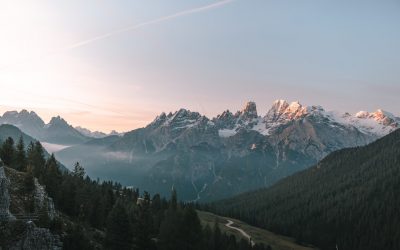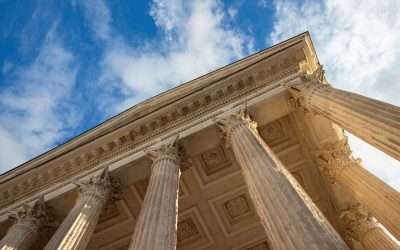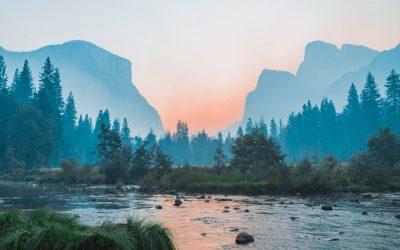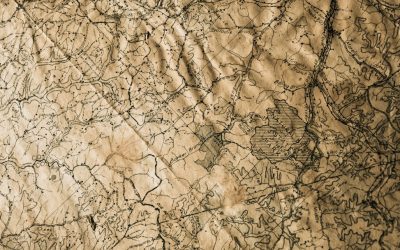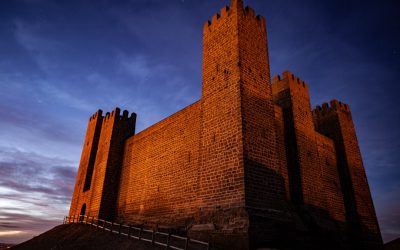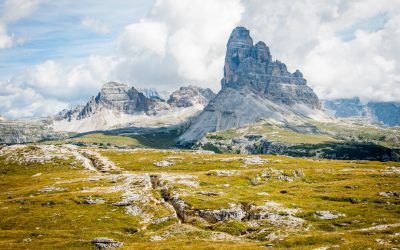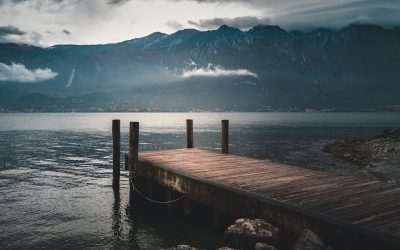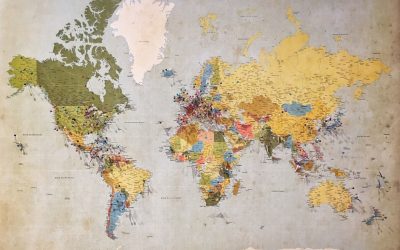Explore the World Through Geography, Natural Resources & Daily History
Clear, reliable and engaging guides that help you understand our planet — from UK geography education to global natural resources and On This Day history events.
Explore, discover, and learn about the wonders of our world! At Earth Site, we’re passionate about bringing geography, history, and science to life for curious minds of all ages. Whether you’re delving into historical events, uncovering the mysteries of the natural world, or seeking interactive resources, you’re in the right place.
Here, you can uncover the stories behind historical events, explore the natural wonders of our planet, and gain valuable insights into how the Earth’s systems shape our daily lives. From the towering peaks of mountain ranges to the far-reaching impacts of human innovation, we aim to make every topic both engaging and informative.
Start your journey of discovery with us today, and let’s make learning an adventure!
What We Cover
Earth Site brings together engaging and accessible educational content designed to help you understand the world, its history, and its natural systems.
🌍 Geography Education (UK & Worldwide)
We publish clear, easy-to-understand geography resources for students, teachers and curious learners. Our guides support geography education in the UK and cover physical geography, climate, ecosystems, population, and global development.
⛏️ Natural Resources & Environmental Geography
Explore detailed country profiles covering natural resources, mining, energy, geology and global environmental challenges. We show how nations manage minerals, water, land and ecosystems, and why these resources matter.
📅 On This Day in History
Every day has a story. Our On This Day history series features major events, anniversaries, traditions, and cultural milestones from around the world — with timelines, context, and fun facts.
TIMELINE
Political Boundaries of Antigua and Barbuda: Provinces, Districts, or Historical Boundaries.
Antigua and Barbuda, located in the eastern Caribbean, is a small island nation with a rich history and vibrant culture. Understanding the political boundaries of this country is crucial for effective governance and decision-making. Political boundaries define the territories and jurisdictions within which governments operate, and they play a significant role in shaping the social, economic, and political landscape of a nation. Summary Antigua and Barbuda is a sovereign nation consisting of two major islands and several smaller ones. The country’s political boundaries have evolved over time due to colonization and independence movements. Provinces play a significant role in Antigua and Barbuda’s political system, with each having its own government and leader. The country is divided into six districts, each with its own unique characteristics and challenges. Political boundaries have a significant impact on Antigua and Barbuda’s society, including access to resources and representation in government. Historical Boundaries of Antigua and Barbuda The political boundaries of Antigua and Barbuda have evolved over time due to various historical factors. The islands were originally inhabited by the indigenous Arawak and Carib peoples before being colonized by the Spanish in the late 15th century. The British later established control over the islands in the 17th century, and they remained under British rule until gaining independence in 1981. During the colonial period, Antigua and Barbuda were part of the British West Indies Federation, which included several other Caribbean territories. The boundaries of these territories were often redrawn to suit the needs of the colonial powers, resulting in changes to Antigua and Barbuda’s political boundaries. The Role of Provinces in Antigua and Barbuda’s Political...
Natural Resources of Antigua and Barbuda: Where Natural Resources are located In Antigua and Barbuda
Antigua and Barbuda, a small island nation located in the Caribbean, is blessed with a variety of natural resources that contribute significantly to its economy and the livelihoods of its people. These resources include minerals, agricultural land, forests, marine resources, and energy sources. The abundance of these resources has played a crucial role in shaping the country’s history and development. Natural resources are essential for the economic growth and development of any nation. In the case of Antigua and Barbuda, these resources provide employment opportunities, contribute to the country’s GDP, and support various industries such as agriculture, tourism, and manufacturing. They also play a vital role in ensuring food security and providing raw materials for industries. Summary Antigua and Barbuda is a small island nation in the Caribbean with a variety of natural resources. The geography of Antigua and Barbuda includes coral reefs, beaches, and hilly terrain. Natural resources in Antigua and Barbuda are located in various parts of the country, including the coast and interior. Mineral resources in Antigua and Barbuda include limestone, clay, and sand. Agricultural resources in Antigua and Barbuda include crops such as sugarcane, bananas, and vegetables. Overview of the Geography of Antigua and Barbuda Antigua and Barbuda consists of two main islands, Antigua and Barbuda, along with several smaller islands. It is located in the eastern Caribbean Sea, southeast of Puerto Rico. The country covers an area of approximately 440 square kilometers (170 square miles). The topography of Antigua is characterized by low-lying limestone formations with some volcanic hills in the southwest. Barbuda, on the other hand, is mostly flat with sandy beaches and...
Climate Zones of Antigua and Barbuda: Different climate regions Of Antigua and Barbuda
Antigua and Barbuda, located in the eastern Caribbean, is a small island nation consisting of two main islands – Antigua and Barbuda – along with several smaller islands. The country is known for its stunning beaches, crystal-clear waters, and vibrant culture. Understanding the climate zones of Antigua and Barbuda is crucial for both visitors and residents, as it helps in planning activities, packing appropriate clothing, and understanding the local environment. Summary Antigua and Barbuda has a variety of climate zones, including tropical, arid, humid, coastal, and inland. Barbuda Island has an arid climate, while Antigua Island has a humid climate. The coastal climate of Antigua and Barbuda is influenced by the sea, while the inland climate is influenced by the terrain. Antigua and Barbuda has a rainy season from June to November and a dry season from December to May. Climate change is a growing concern for Antigua and Barbuda’s ecosystem and future. The Tropical Climate of Antigua and Barbuda Antigua and Barbuda experience a tropical climate, characterized by high temperatures and abundant rainfall throughout the year. The average temperature ranges from 25°C (77°F) to 30°C (86°F), making it an ideal destination for those seeking warm weather. The tropical climate zone is home to a diverse range of flora and fauna, including palm trees, hibiscus flowers, and various species of birds. The Arid Climate of Barbuda Island Barbuda Island, which is located north of Antigua, has an arid climate zone. This means that it receives less rainfall compared to other parts of Antigua and Barbuda. The average temperature on Barbuda ranges from 26°C (79°F) to 31°C (88°F). The arid...
Population Density of Antigua and Barbuda
Antigua and Barbuda, a small island nation located in the Caribbean, has a population density that is of great importance to understand. Population density refers to the number of people living in a specific area, usually measured in square kilometers or square miles. Understanding population density is crucial as it provides insights into the distribution of people within a country, which in turn can have significant implications for social, economic, and environmental factors. Summary Antigua and Barbuda has a population density of 223 people per square kilometre. The country is located in the eastern Caribbean, consisting of two main islands and several smaller ones. Population growth in Antigua and Barbuda has been influenced by colonialism, slavery, and migration. As of 2021, the population of Antigua and Barbuda is estimated to be around 98,000 people. Factors such as limited land availability and economic opportunities contribute to the uneven distribution of population between urban and rural areas. Understanding the Geographical Location of Antigua and Barbuda Antigua and Barbuda consists of two main islands, Antigua and Barbuda, along with several smaller islands. It is located in the eastern Caribbean Sea, southeast of Puerto Rico. The islands are part of the Lesser Antilles, which are a group of islands that form an arc between the Greater Antilles and South America. The geographical location of Antigua and Barbuda has a direct impact on its population density. Being situated in the Caribbean Sea, Antigua and Barbuda have a tropical climate with warm temperatures year-round. This makes the islands an attractive destination for tourists, which in turn can influence population density. Additionally, the islands’ location also...
Terrain and Topography of Antigua and Barbuda: mountains, valleys, and plains.
Antigua and Barbuda, located in the eastern Caribbean, is a stunning island nation known for its beautiful beaches and crystal-clear waters. However, beyond its pristine coastline lies a diverse and fascinating terrain that is worth exploring. From its mountainous regions to its valleys and coastal plains, Antigua and Barbuda’s topography plays a crucial role in shaping the island’s climate, biodiversity, and agricultural industry. Understanding the island’s geography is essential for sustainable development and conservation efforts. Summary Antigua and Barbuda’s terrain is diverse, with mountainous regions, valleys, coastal plains, and unique karst topography. The mountainous regions of Antigua and Barbuda offer stunning views and are home to a variety of flora and fauna. The valleys of Antigua and Barbuda are low-lying areas that are important for agriculture and provide habitat for wildlife. The coastal plains of Antigua and Barbuda are home to many of the island’s towns and cities, as well as important ecosystems like mangroves and coral reefs. Antigua and Barbuda’s topography plays a significant role in shaping the climate and weather patterns of the islands. The Mountainous Regions of Antigua and Barbuda Antigua and Barbuda may be known for its beaches, but it also boasts some impressive mountainous areas. The highest point on the island of Antigua is Mount Obama, formerly known as Boggy Peak, which stands at 402 meters (1,319 feet) above sea level. This mountain offers breathtaking views of the surrounding landscape and is a popular hiking destination for both locals and tourists. In addition to Mount Obama, there are several other notable mountains on the island, including Signal Hill and Shirley Heights. These mountains provide...
Cultural or Historical Sites of Antigua and Barbuda: Important Cultural Landmarks or Historical Sites In Antigua and Barbuda
Antigua, a small island in the Caribbean, is known for its stunning beaches and crystal-clear waters. However, beyond its natural beauty, Antigua also boasts a rich history that is worth exploring. From colonial architecture to historic naval bases, the island is home to numerous historical sites that offer a glimpse into its past. When visiting Antigua, it is important to take the time to explore these sites and learn about the island’s fascinating history. Summary Nelson’s Dockyard is a UNESCO World Heritage Site and a historic naval base. Betty’s Hope is the oldest sugar plantation on Antigua. St. John’s Cathedral is an iconic landmark of colonial architecture. Devil’s Bridge is a natural wonder and symbol of African slave resistance. The Museum of Antigua and Barbuda preserves the islands’ cultural heritage. Nelson’s Dockyard: A Historic Naval Base and UNESCO World Heritage Site One of the most significant historical sites in Antigua is Nelson’s Dockyard. This historic naval base was established in the 18th century and played a crucial role in the British Navy’s operations in the Caribbean. Today, it is a UNESCO World Heritage Site and a popular tourist attraction. Touring Nelson’s Dockyard allows visitors to step back in time and experience what life was like during the height of the British Empire. The dockyard is home to numerous restored buildings, including the Admiral’s House, which now serves as a museum showcasing the history of the dockyard. Visitors can also explore the ruins of old warehouses and workshops, giving them a sense of the bustling activity that once took place here. Betty’s Hope: The Oldest Sugar Plantation on Antigua Sugar...
Republic of Angola: Natural Resources, Diamond, Mineral Resources and Mining Industry
Republic of Angola: Natural Resources, Diamond, Mineral Resources and Mining Industry Angola, officially known as the Republic of Angola, is a nation rich in natural resources, boasting vast reserves of oil, diamonds, and various minerals. This abundance has positioned Angola as a significant player in the global mining industry. Understanding the natural resources of Angola is crucial for comprehending its economic landscape and the challenges and opportunities that come with resource wealth. Outline What Are Angola’s Primary Natural Resources? How Has Diamond Mining Shaped Angola’s Economy? The Role of Oil in Angola’s Economic Development Exploring Angola’s Iron Ore Reserves The Impact of Natural Resources on the Angolan Economy Challenges in Angola’s Mining Industry The Influence of Portuguese Colonisation on Resource Extraction Post-Civil War Recovery and Resource Management Angola’s Position in Sub-Saharan Africa‘s Resource Landscape Future Prospects for Angola’s Natural Resource Sector 1. What Are Angola’s Primary Natural Resources? Angola is endowed with a variety of natural resources, including petroleum, diamonds, iron ore, phosphates, copper, feldspar, gold, bauxite, and uranium. These resources have been central to the country’s economic activities and export revenues. The petroleum sector is particularly significant, contributing a substantial portion to Angola’s GDP and government revenue. Diamonds also play a crucial role, with Angola being one of the largest producers of diamonds in Africa. The mining of iron ore and other minerals further diversifies the country’s resource base. 2. How Has Diamond Mining Shaped Angola’s Economy? Diamond mining has been a cornerstone of Angola’s economy, especially since the end of the civil war. The country is among the top producers of diamonds globally, with significant...
Political Boundaries of Angola: Provinces, Districts, or Historical Boundaries.
Angola, located in Southern Africa, is a country with rich history and diverse cultures. Understanding Angola’s political boundaries is crucial for comprehending its governance, history, and the challenges faced by its people. Angola shares borders with several countries, including Namibia, Zambia, the Democratic Republic of Congo, and the Republic of Congo. The Atlantic Ocean forms Angola’s western boundary. These political boundaries have played a significant role in shaping Angola’s history and present-day circumstances. Summary Angola’s political boundaries have evolved over time, with the country currently divided into 18 provinces and 164 municipalities. The provincial divisions have historical and cultural significance, with some dating back to the colonial era and others established after independence. Districts are the smallest administrative units in Angola, responsible for providing basic services and governance to local communities. Angola’s historical boundaries have been shaped by colonialism, civil war, and international disputes, with some areas still contested today. The impact of Angola’s political boundaries on its people can be seen in issues such as access to resources, ethnic tensions, and regional disparities in development. Angola’s Provincial Divisions: History and Significance Angola is divided into 18 provinces, each with its own unique characteristics and cultural heritage. The provincial divisions in Angola have a long historical background that dates back to the colonial era. During the Portuguese colonial rule, Angola was divided into three major regions: Angola, Benguela, and Mozambique. These regions were further divided into districts and municipalities. The significance of provincial divisions in Angola’s governance lies in the decentralization of power and resources. Each province has its own government and administration, allowing for local decision-making and development...
Cultural or Historical Sites of Angola: Important Cultural Landmarks or Historical Sites In Angola
Angola, located on the western coast of Africa, is a country rich in cultural and historical sites. From ancient ruins to colonial architecture, Angola’s heritage tells the story of its diverse past. Preserving these sites is crucial for future generations to understand and appreciate the country’s history and cultural identity. Summary Angola has a rich cultural and historical heritage, with many sites of significance. Luanda, the capital city, has a fascinating history that reflects Angola’s colonial past. The Kongo Kingdom played a significant role in Angola’s history and is still celebrated today. The Great Zimbabwe ruins in Angola are shrouded in mystery and intrigue. The legacy of Portuguese colonialism is still evident in Angola’s culture and architecture. The Rich History of Angola’s Capital City, Luanda Luanda, the capital city of Angola, has a fascinating history that dates back to pre-colonial times. Originally inhabited by the Ambundu people, Luanda became an important trading post for the Portuguese in the 16th century. Over the centuries, it grew into a bustling city with a mix of African, European, and Brazilian influences. One of the key historical sites in Luanda is Fortaleza de São Miguel, a fortress built by the Portuguese in the 16th century to protect their interests in the region. Today, it serves as a museum that showcases the city’s colonial past. Another important site is the National Museum of Slavery, which documents Angola’s role in the transatlantic slave trade and educates visitors about this dark chapter in history. The Significance of the Kongo Kingdom in Angola’s History The Kongo Kingdom played a significant role in shaping Angola’s history. Established in...
Climate Zones of Angola: Different Climate Regions Of Angola
Angola, located on the west coast of southern Africa, is a country known for its diverse geography and climate. The country is characterized by a wide range of climate zones, each with its own unique characteristics and ecosystems. From tropical savannas to coastal deserts, Angola’s climate zones offer a variety of landscapes and opportunities for both its people and its economy. Summary Angola has a diverse range of climate zones, including tropical savanna, semi-arid, subtropical highland, humid subtropical, and coastal desert. The tropical savanna region covers most of Angola and experiences a wet and dry season, with temperatures ranging from 20-30°C. The semi-arid region is located in the south and east of Angola and experiences hot and dry conditions, with temperatures reaching up to 40°C. The subtropical highland region has cooler temperatures due to its higher altitude, with temperatures ranging from 10-20°C. The humid subtropical region experiences high levels of rainfall and humidity, with temperatures ranging from 20-30°C. Factors influencing Angola’s climate zones include latitude, altitude, ocean currents, and prevailing winds. Angola’s climate zones have a significant impact on agriculture and the economy, with the tropical savanna region being the most suitable for farming. Climate change is affecting Angola’s climate zones, with increased temperatures and changes in rainfall patterns. Angola’s diverse climate zones are significant for the country’s biodiversity and provide opportunities for tourism and economic development. Tropical savanna climate region The tropical savanna climate region in Angola is characterized by hot temperatures and distinct wet and dry seasons. This climate zone covers a large portion of the country, particularly in the central and northern regions. Cities such as...
Terrain and Topography of Angola: mountains, valleys, and plains.
Angola, located on the western coast of Southern Africa, is a country known for its diverse and stunning terrain. From majestic mountains to vast plains, Angola’s topography offers a wealth of natural beauty and resources. Understanding Angola’s terrain and topography is crucial for various reasons, including agriculture, economy, and tourism. By exploring the different aspects of Angola’s geography, we can gain a deeper appreciation for the country’s natural wonders and the opportunities they present. Summary Angola’s terrain is diverse and varied, with mountains, valleys, plains, and unique geology. The majestic mountains of Angola offer stunning views and opportunities for exploration. The valleys of Angola are rich in biodiversity and offer unique opportunities for agriculture and tourism. The vast plains of Angola are home to a variety of wildlife and offer opportunities for ranching and agriculture. Angola’s unique geology, including diamonds and oil reserves, has played a significant role in the country’s economy. The Majestic Mountains of Angola Angola is home to several mountain ranges that add to the country’s breathtaking landscape. The most prominent mountain range is the Serra da Chela, located in the southwest region of Angola. This range stretches for approximately 200 kilometers and reaches elevations of up to 2,620 meters at its highest peak, Mount Moco. Mount Moco is not only the highest peak in Angola but also the highest in all of Southern Africa. Another notable mountain range in Angola is the Serra da Leba, famous for its stunning winding road that offers panoramic views of the surrounding valleys. The range reaches elevations of up to 1,845 meters at its highest point. These mountains have...
Population Density of Angola
Angola, located in Southern Africa, is a country with a diverse population and varying population density across its regions. Understanding population density is crucial for policymakers and stakeholders as it helps in planning and implementing effective policies and programs. Population density refers to the number of people living in a specific area, usually measured in terms of persons per square kilometer. By analyzing population density, we can gain insights into the distribution of resources, infrastructure needs, and social services required to meet the needs of the population. Summary Angola has a population density of 26 people per square kilometer. Angola’s population has grown rapidly since the 1950s due to improved healthcare and infrastructure. The majority of Angola’s population is concentrated in the northern and coastal regions. Urbanization has led to a significant increase in population density in Angola’s major cities. Angola’s high population density poses challenges for managing resources and providing basic services. Historical Overview of Angola’s Population Angola has a rich history that has influenced its population growth over the years. The country experienced significant population growth during the colonial period when it was under Portuguese rule. The Portuguese brought in large numbers of settlers and forced laborers from other African countries, resulting in an increase in the population. However, this growth was not evenly distributed across the country, with coastal areas experiencing higher population densities compared to the interior regions. Current Population Trends in Angola As of 2021, Angola has an estimated population of around 33 million people. The country has experienced steady population growth over the years, with an average annual growth rate of around 2%....
